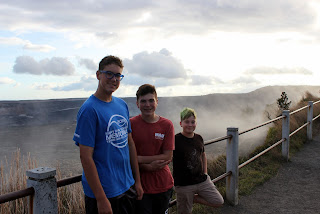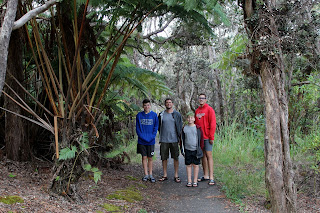Plenty of birds on this rainy Halloween.
Thursday, October 31, 2019
Thursday, October 17, 2019
molokini
It's our last night in Hawaii, and while we're sad to leave this paradise, we're eager to get back home to our dogs and resume our regularly scheduled lives. But for today, we had time for one last adventure.
All the guidebooks say that on your first visit to Maui, you should take a snorkel trip to Molokini, a mostly submerged volcanic crater. It's protected from the winds, so it's a nice calm place to snorkel, there is an abundance of fish, and the visibility is great. It's not a cheap trip, though, plus about 1,000 people (maybe more?) go on different boats every morning. We didn't decide for sure that we would do it until after we got here. But I'm so glad we did because it was AMAZING. Yes, it was crowded, which is generally something I intensely dislike, but once you start floating and put your head in the water, other people just fade into the background, and it's just you and the magnificent ocean.
I won't bore you with a lot more words when the pictures speak so eloquently. Dive on in!
Wednesday, October 16, 2019
hawai'i volcanoes national park
After our adventures around Hilo, we checked into the Volcano Inn, where we had possibly the most incredible hotel room ever: two stories, each of which had giant windows looking out into the dense rain forest. The bottom floor was a living room and kitchen/dining area, and the top had all the beds. Seriously, this may be the first time we've ever stayed at a place and had an extra bed. I can't say enough good things about it. If you're headed to Hilo, do yourself a favor and book a room here.
Once we were checked in, we ventured the whopping five minutes to get our first glimpse of Hawai'i Volcanoes National Park. The eruptions of 2018 destroyed a lot of areas of the park, so there are some classic sights (like the Thurston Lava Tube) that are still closed to visitors, and there's no active lava flowing, but we managed to see plenty anyway. We started at the visitor center, then headed along Crater Rim Drive to the steam vents overlooking the Kilauea Caldera. Friends, the pictures don't do this place justice. It's really otherworldly, quiet and desolate, with steam rising all over the landscape. We spent all the time we had before the sun went down just wandering around and admiring it all.
We got up early this morning to head back into the park to drive the Chain of Craters Road. It leads from the top of Kilauea all the way down to the ocean. Our first stop was the Kilauea Iki Crater, the result of a 1959 eruption. It was raining when we started out, so no other cars were on the road, and when we got to the crater, we found a reward: a rainbow!
Just past the Kilauea Iki Crater, we hiked Devastation Trail, where the forest was destroyed by the same 1959 eruption. It was amazing to start out in lush vegetation and have it abruptly change to a field of lava rocks and dead branches. Some small plants are there now, growing right up out of the lava rocks. The boys really liked scrambling over the lava fields, and we saw another very faint rainbow.
The next area we stopped at was the 1969-1974 eruption lava field. And here is where I made my Hawaii dream come true by seeing the state bird, the nene. These guys were not bothered at all by my presence, so I was able to take pictures to my heart's content. The boys, of course, were more interested in climbing rock formations and checking out fissures.
The road continued down the mountain, and the views opened up so we could see everything all at once: the rain forest, the paths the lava took during the various eruptions, the curving road, and all the way down to the ocean. We stopped at Kealakomo to try (mostly unsuccessfully) to capture it all for posterity.
Remember how I mentioned that Thurston Lava Tube is closed because of last year's eruption? Well, luckily for us, it turns out that every time there's a new lava flow and part of the road gets destroyed, the park crews have to come and cut a new road, and sometimes those new roads end up bisecting previously undiscovered lava tubes. This one doesn't have a name, but it's right along the side of the road, and it was plenty tall enough for the boys to go in and check it out. I'd say it had a height of right around 6 feet, 4 inches, or one 15-year-old Liam.
At the end of the road is the Holei Sea Arch, which juts out into the ocean. It was windy and spectacular, and the perfect cap to the journey.
After the return trip, we had to pack up and say goodbye to the glorious Volcano Inn. We had time for one more delightfully weird stop on the way back to the airport: Lava Tree State Park. Yeah, the lava trees are just what they sound like. The trees were wet because the area gets a lot of rain, and when the hot lava hit the wet trees, the lava solidified around the trees, killing the trees but leaving behind tree-shaped lava molds. Neat!
Subscribe to:
Posts (Atom)




































































